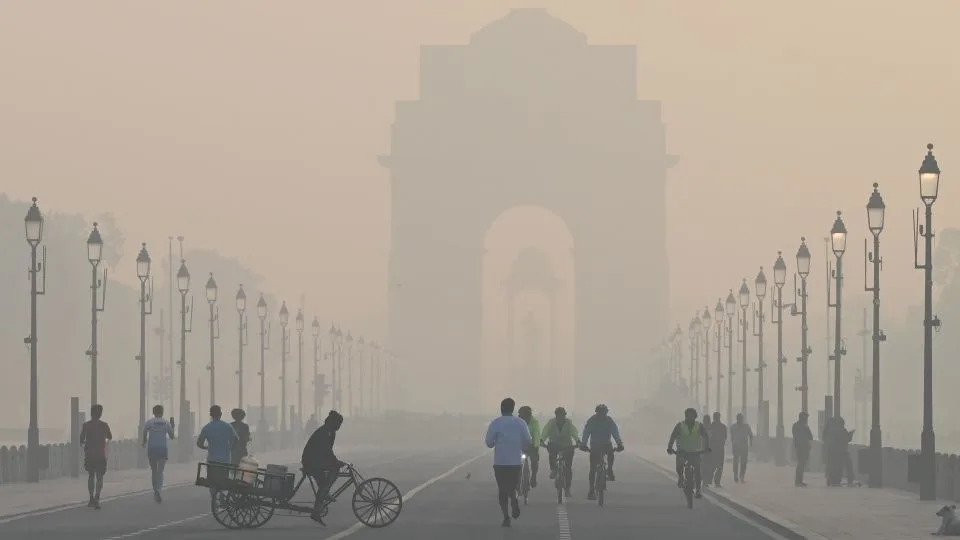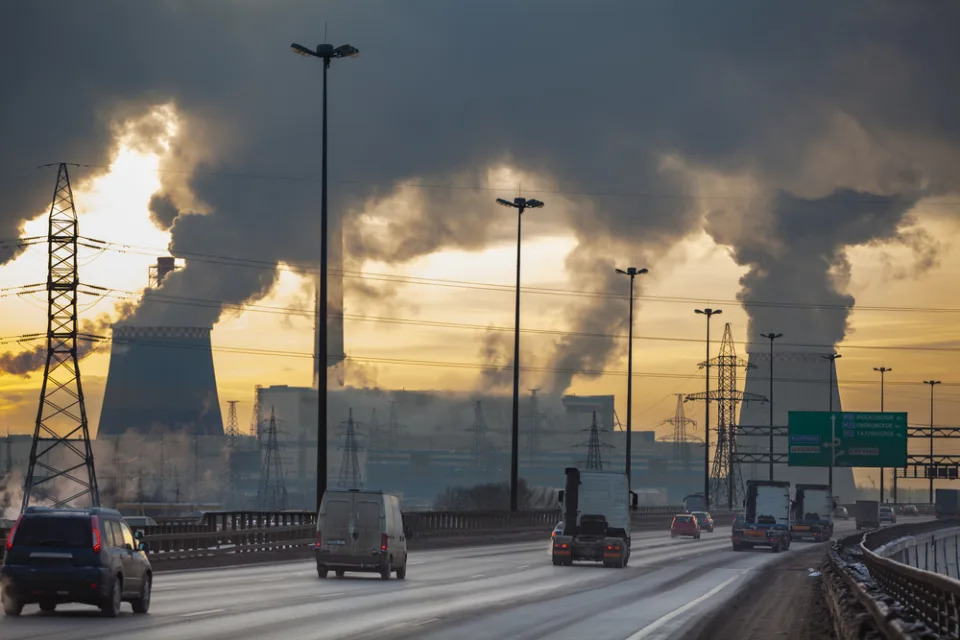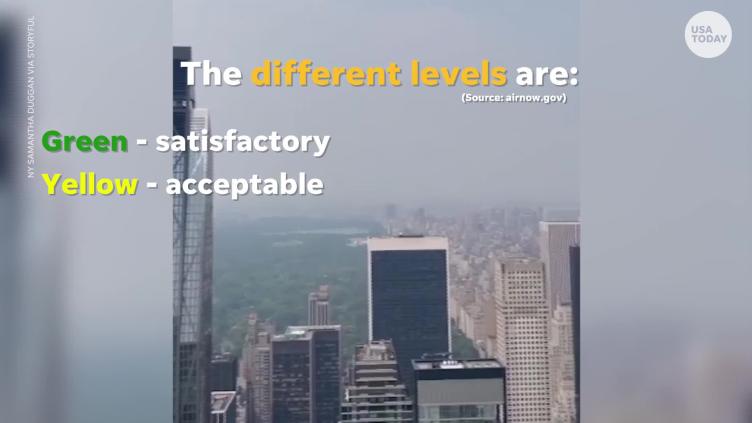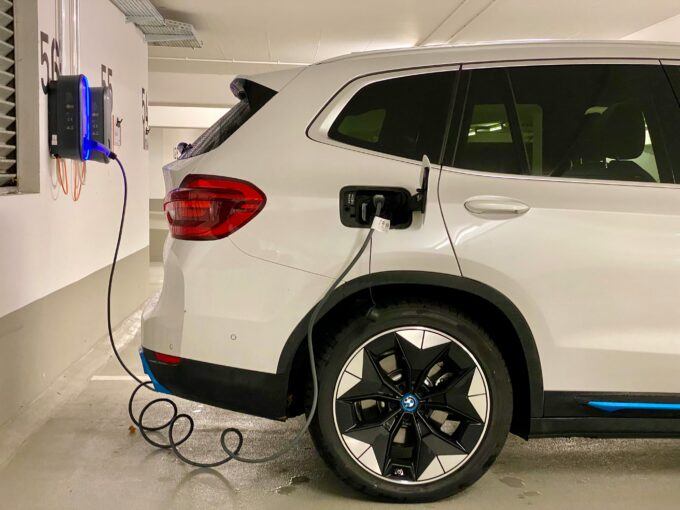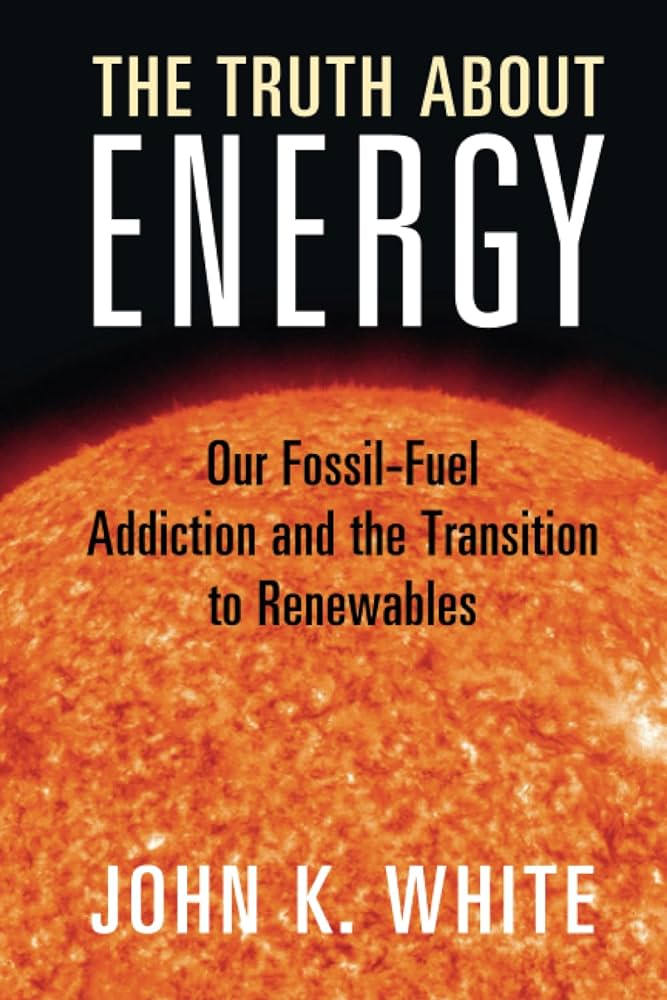Ahmad Mukhtar
Updated Wed, May 15, 2024
Toronto — Wildfire season has arrived in full force in Western Canada, prompting evacuation orders and alerts in several towns in British Columbia and neighboring Alberta due to the danger of uncontrolled blazes. According to the BC administration's latest wildfire situation report, seven evacuation orders and five alerts had been issued in the province since Friday, driving about 4,700 residents from their homes.
"The situation is evolving rapidly," British Columbia's emergency management minister Bowninn Ma warned Monday, as officials said there were 130 active wildfires burning, 14 of them deemed out of control.
Thousands more people got evacuation orders Tuesday as strong winds pushed a raging fire closer to the oil-rich town of Fort McMurray, in Alberta province. Josee St-Onge, a spokesperson for the Alberta wildfire service, said that due to the intensity of the blaze, firefighting crews were pulled back from the front line Tuesday for safety reasons.
"We are seeing extreme fire behavior. Smoke columns are developing, and the skies are covered in smoke," St-Onge said at a news conference.
The 2023 wildfire season in Canada was the worst on record, with 6,551 fires scorching nearly 46 million acres, from the West Coast to the Atlantic provinces and the far north. The impact on the environment, particularly air quality, in both Canada and the United States was profound. As predicted, 2024 is shaping up to be another devastating wildfire season, and disaster and climate experts have a pretty good idea of why.
Most of the fires now ravaging Canada have actually been burning since last fire season, having smoldered slowly during the winter under the snowpack.
Scientists say these blazes, sometimes called zombie fires, are a stark reminder of the impact of climate change. Studies have linked the overwinter fires to ongoing drought conditions amid the increasingly hot, dry springs Canada has experienced in recent years. Scientists say less precipitation and warmer winter temperatures mean fires can keep burning in the dense layers of vegetation under the snowpack.
Sonja Leverkus, an ecosystem scientist in British Columbia who also works as a firefighter, told CBS News on Monday that the northeast of the Canadian province has so many wildfires at the moment "because we are in a severe drought for a third year in a row."
She said the parched conditions were likely to make things worse before they get any better.
Leverkus has been on the front line of the battle against fires in her hometown of Fort Nelson, where she and her teammates and their communities are currently under evacuation orders.
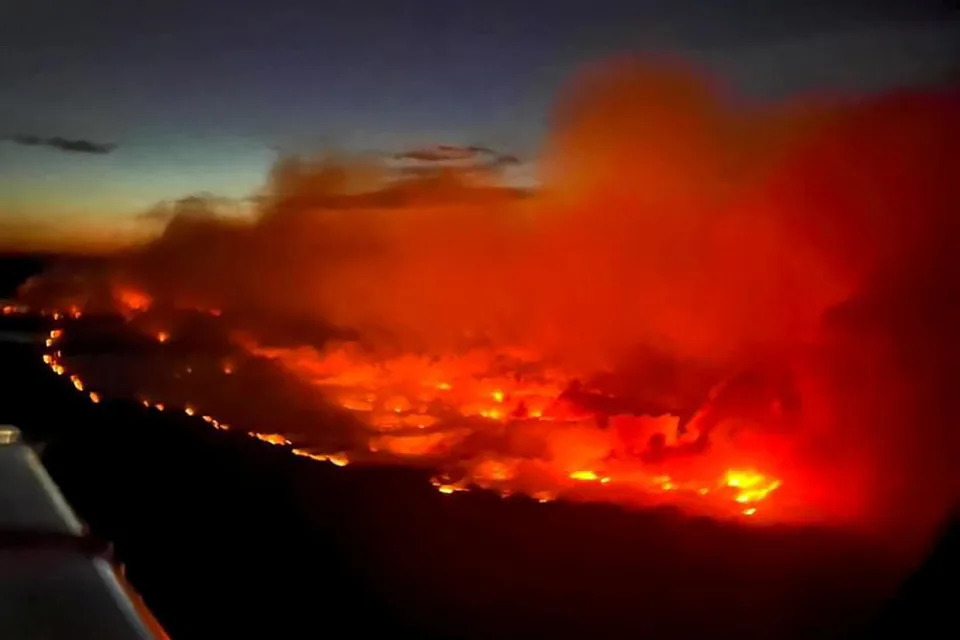
The Parker Lake wildfire glows in an aerial photograph taken by a British Columbia Emergency Health Services crew member through the window of an airplane evacuating patients from nearby Fort Nelson, May 10, 2024. / Credit: Andrei Axenov/BCEHS
"Many of the current fires this week were 2023 wildfires that overwintered below ground," she said. "We are heavy into spring, with low relative humidity, high wind, heat, and zero precipitation. Hence, wildfires."
Wildfire expert Ben Boghean, commenting this week on the blaze currently threatening the Parker Lake community in British Columbia, said Sunday that last year's severe drought conditions have enabled fires to spread at dizzying rates this spring, and due to the below-normal snowpack new fires are also erupting more easily.
Can wildfire smoke make you sick? How to stay safe amid air quality alerts, wildfire evacuations in Canada
With parts of Canada and the U.S. under air quality warnings, here's what to know about staying indoors, wearing a mask, and more tips to stay safe.
Karla Renic
·Lifestyle Editor
Updated Tue, May 14, 2024
This article is for informational purposes only and is not a substitute for professional medical advice, diagnosis or treatment. Contact a qualified medical professional before engaging in any physical activity, or making any changes to your diet, medication or lifestyle.
Dangers of wildfire smoke inhalation are making headlines again as fires rage across Canada. On May 11, 2024, the Aurora Borealis was seen shining overhead of a B.C. Conservation Officer Service vehicle as a wildfire burns in the background near Fort Nelson, B.C. (THE CANADIAN PRESS/HO-Ministry of Water, Land and Resource Stewardship)More
Wildfires are raging again across Canada, with around 90 fires currently burning and smokey conditions affecting western provinces. The situation has led to hazardous air quality conditions in Canada, extending into the United States for the first time this season.
In northeastern British Columbia, the Parker Lake Fire tripled in size over the weekend and has gotten closer to the community of Fort Nelson, that's now under an evacuation order. Meanwhile, in Alberta, an evacuation alert is in place for residents of the Fort McMurray area after new fire starts over the weekend. The province is also being impacted by the wildfire smoke from B.C., with officials saying: "We know the presence of wildfires and smoke in the region can cause a wide range of emotions. Many local public and professional mental health resources are available."
Environment Canada has issued air quality alerts for parts of B.C., Alberta, Manitoba, Saskatchewan, Northwest Territories and Quebec on Monday through Tuesday. "Wildfire smoke can be harmful to everyone's health even at low concentrations," it warned.
Warnings were also issued south of the border, in Minnesota, Montana, the Dakotas and Wisconsin due to the haze, urging people to stay indoors and avoid physical activity outside.
As the wildfire season kicks off, ways to protect ourselves from smoke are top-of-mind for many. Last year, Yahoo Canada spoke to a top respirologist in Toronto, who weighed in on the impact of smoke on our lungs, and what to do to stay safe. Read on for everything you need to know.
Wildfire smoke symptoms, and impact of wildfire smoke on our health: Expert
Smoke from wildfires blankets the city as a couple has a picnic in Edmonton, Alta., on Saturday, May 11, 2024. THE CANADIAN PRESS/Jason Franson
Dr. John Granton, a respirologist at the Toronto General Hospital (University Health Network), told Yahoo Canada wildfires cause air pollution that can have a far-reaching effect on human health.
Small air pollutant particles in the smoke, called the PM2.5 particles, are "where a lot of the toxic stuff lives," Granton explained.
"That's not filtered by your upper airway, that gets access to your lower airway and into your bloodstream even — and that's where the danger lies.
"That can cause asthma attacks, can cause heart attacks, can contribute to hospitalizations and has long-term health outcomes."
Even just the smell could cause problems to some, he said.
"Being in smog all day long, the smell bothers people; it can cause irritation of the upper airway, some of the larger particles can cause irritation, and cause symptoms. People [who] have chest symptoms or asthma, it can make them feel worse."
Granton said smoke isn't easy to escape, but there are some things people can do try and stay safe.
Can face masks protect us from smoke?
According to Granton, "there's not a lot of data to support the health benefits of masking" when it comes to safety from wildfire smoke. But, he said there is research looking into the effectiveness of filters.
"Cloth masks or scarves and things are not effective at all," the doctor claimed.
But, surgical masks and N95 filter masks "tend to filter those smaller particles," he added, "apparently some of those masks are effective."
A cyclist wears a mask due to poor air quality conditions as smoke from wildfires in Ontario and Quebec hangs over Ottawa on Tuesday, June 6, 2023. THE CANADIAN PRESS/Sean Kilpatrick
Granton said "they're not going to filter the gases," though, and there are studies that question whether masks that aren't properly fitted would actually help in the real world.
"Whether or not that has a direct health benefit is speculative right now," Granton explained.
However, he said it "may be reasonable" for those who have underlying health conditions and those who have to be in the hotspots of the pollution to wear one.
"If you have to be outdoors and doing things, then wearing that sort of mask to protect you would be sensible."
How else to protect yourself from wildfire smoke?
Though filtration masks could aid in protecting your lungs from smoke, the number one recommendation from experts is to stay indoors.
Canadian experts are advising to stay indoors to protect yourself from wildfire smoke. (THE CANADIAN PRESS/Sean Kilpatrick)
According to Health Canada, the following measures should also be taken:
Reduce sources of indoor air pollution (smoking, vacuuming, burning candles, wood stoves)
Prevent infiltration of outside air (seal windows, instal a high-quality air filter, set HVAC system to recirculation mode, limit use of exhaust fans when not cooking)
Have a functioning CO alarm
Use a portable air purifier and air conditioning
Granton echoed this advice.
"Most people recommend staying indoors as much as possible and not exercising or doing things outside," he reiterated.
How Inhaling Wildfire Smoke Can Affect You in the Long Term
Chantelle Lee
Wed, May 15, 2024
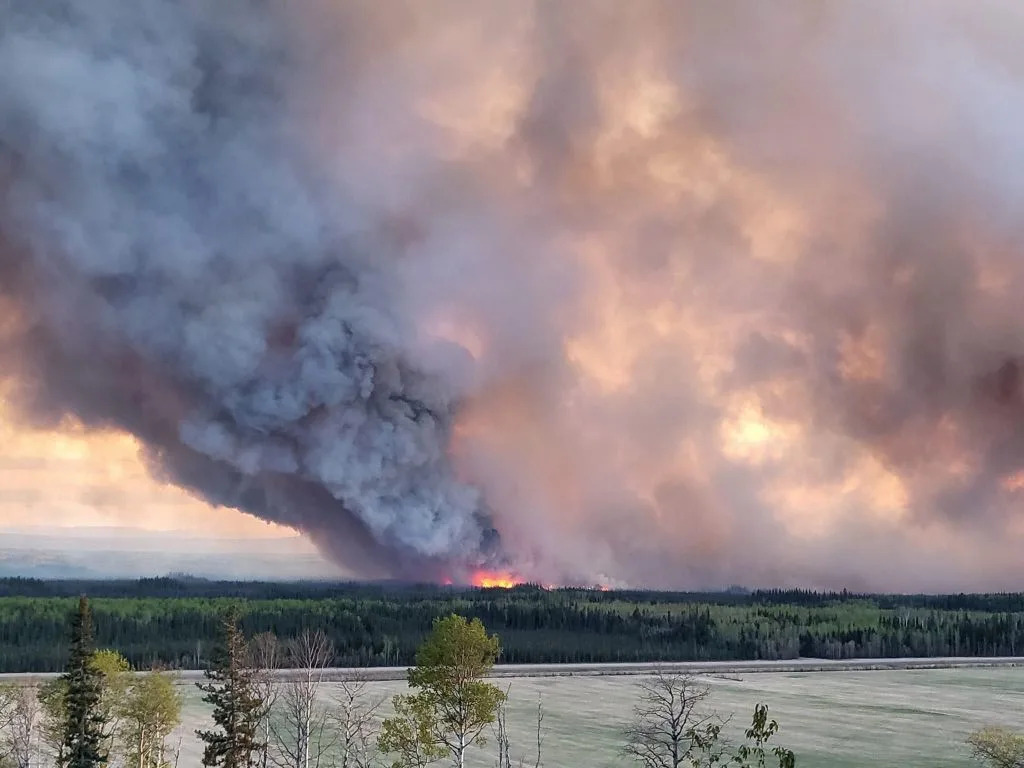
Smoke rises after fire erupts in Western Canada on May 14, 2024. Credit - Cheyenne Berreault—Anadolu/Getty Images
Wildfires burning in Canada started sending smoke across the border on Sunday and into the week, prompting U.S. officials to issue air quality warnings in several northern states—and experts say people should be prepared to experience more air quality alerts this summer.
Parts of Montana, the Dakotas, Minnesota, and Wisconsin suffered from poor air quality on Sunday and Monday because of smoke from wildfires continuing to burn in British Columbia and Alberta. While skies in the U.S. mostly cleared by Tuesday, experts say they’re expecting another active wildfire season this summer.
Last summer was Canada’s most devastating wildfire season on record, and researchers found that it was also the worst season in recent history for smoke exposure per U.S. resident.
“We still think that last year was pretty extreme, kind of an anomaly, but we do expect an above average year (this year) in terms of air quality alerts,” says David Brown, an air quality meteorologist at the Minnesota Pollution Control Agency.
Brown urged people to be aware and cautious because of the danger that inhaling wildfire smoke poses.
“Wildfire smoke can really affect everyone,” Brown tells TIME. “Prior to these really bad two summers, air quality has kind of been … an issue that probably only affects a small percentage of the population. But these impactful wildfire smoke events really can have impacts on everyone, so everyone kind of has to pay closer attention to the weather and air quality.”
Fine particles in wildfire smoke—known as PM2.5 because they have a diameter of less than 2.5 micrometers—are so small that they can enter your lungs and even your bloodstream, according to Craig Czarnecki, the outreach coordinator for the Wisconsin Department of Natural Resources’ Air Management Program.
The average person could experience relatively mild symptoms after breathing in these particles, like a scratchy throat and itchy eyes, Brown explains. But for children, older people, and people with pre-existing heart or respiratory conditions, breathing in these particles can cause more significant symptoms—for instance, it could exacerbate a person’s asthma. In extreme cases, some people with pre-existing heart conditions have experienced heart attacks or heart palpitations.
Read More: What Wildfire Smoke Does to the Human Body
A 2023 study published in the Journal of the American Medical Association found an association between smoke from Canadian wildfires and an increase in the number of people being treated for asthma-related symptoms in emergency departments in New York City.
The study shows that “wildfire smoke is a public health threat,” according to Kai Chen, an assistant professor at the Yale School of Public Health and lead author of the study. But the effect of wildfire smoke on asthma is “just one piece” of the impact wildfire smoke can have on people’s health, Chen says.
Research also shows that exposure to wildfire smoke could have long-term impacts. A working paper in the National Bureau of Economic Research found that, as climate change increases the prevalence and intensity of wildfires, wildfire smoke exposure could lead to nearly 28,000 deaths a year by 2050 —a 76% increase from estimated average deaths between 2011 and 2020.
Other studies show that long-term exposure to PM2.5 can impair children’s lung development and increase the risk of developing lung cancer or heart disease.
When officials issue air quality alerts, people should limit their exposure to the wildfire smoke, reduce exertion, and keep an eye out for potential symptoms, like coughing or shortness of breath, Brown and Czarnecki advise. Wearing an N95 mask might be helpful if people are going to be outside for extended periods of time, Czarnecki adds.
“When we have advisories like this, the best way to prevent breathing particles during smoke events is to stay indoors,” Czarnecki says.
Canadian wildfire smoke chokes Midwest with poor air quality again Tuesday
Chris Oberholtz
Tue, May 14, 2024
KANSAS CITY, Mo. – Some northern states are waking up to hazy skies Tuesday due to smoke from wildfires across western Canada.
Dozens of large wildfires are burning, mostly in British Columbia and Alberta provinces. The toxic smoke from these massive wildfires has been released into the air and carried into the northern U.S., causing poor air quality in parts of the Midwest.
The Iowa Department of Natural Resources has issued an air quality alert for the northernmost four tiers of counties west of Interstate 35 and east of I-35 through 11 p.m. Tuesday.
Iowa air quality officials advise limiting outdoor activities and taking more breaks until conditions improve, especially for those with respiratory or heart disease, children, teenagers, the elderly and outdoor workers.
HOW IS AIR QUALITY MEASURED?
The National Weather Service in Sioux Falls, South Dakota, said that some areas may experience minor reductions in visibility and deteriorated air quality due to surface smoke on Tuesday. However, air quality is expected to improve compared to Monday, as the smoke remains mostly aloft.
As the smoke shifted south Tuesday morning, Topeka, Kansas, had the worst air quality in America. Kansas City, Missouri, also ranked among the cities with the worst air quality.
THE AIR QUALITY INDEX EXPLAINED: WHAT AIR QUALITY IS BAD?
On Monday, the Twin Cities of Minneapolis-St. Paul in Minnesota claimed the worst air quality in America after winds carried the smoke southeastward into the northern U.S. The air quality forecast for Minneapolis is improving to "good" for Tuesday through the rest of the workweek.
The FOX Forecast Center said computer forecast models show the smoke hugging portions of the Midwest throughout Tuesday before an approaching cold front brings rain and clearer conditions starting Wednesday.
WHICH U.S. CITIES HAVE THE DIRTIEST AIR? 2024 STATE OF THE AIR REPORT RANKS THEM
The combination of warm temperatures and an ongoing drought have helped fuel several fires in western Canada, which has prompted thousands to leave their homes.
CANADA HAD NORTH AMERICA'S WORST AIR QUALITY IN 2023 BECAUSE OF WILDFIRES, REPORT SAYS
One of the largest fires burning in the province of British Columbia is called the Parker Lake Wildfire. As of Tuesday, the blaze has burned more than 20,000 acres. The British Columbia Wildfire Service has identified the blaze as "out of control," noting that it continues to spread and could breach the current control line.
Local authorities urged the entire town of Fort Nelson to evacuate and use as few vehicles as possible to conserve fuel in the region about 400 miles east of Juneau, Alaska.
Large wildfires are also burning in neighboring Alberta, where thick smoke and poor air quality have been experienced in large parts of the province.
An evacuation alert was issued for Fort McMurray in Alberta as crews respond to what they describe as an "out-of-control wildfire" southwest of town that has burned more than 16,200 acres as of the latest report.
Additionally, authorities are monitoring rekindled fires since the historic 2023 firestorm, which burned more than 45 million acres.
An El Niño regime caused extensive snowfall deficits across much of the country, potentially setting up regions for another record-breaking fire season.
The latest North America Drought Monitor showed nearly half of Canada is in drought conditions, with the driest regions being located in the provinces of Alberta and British Columbia.
In 2023, hundreds of fires in Canada contributed to some U.S. cities seeing their worst air pollution of all time and creating an orange haze in hazardous conditions.
Dozens of blazes burning in Canada are sending smoke to the US. Several major fires have forced hundreds of evacuations
Eric Zerkel, Joe Sutton, Paradise Afshar and Sara Smart, CNN
Mon, May 13, 2024
More than 100 blazes are burning across Canada Monday, with several major wildfires prompting evacuations for hundreds of residents and threatening to swallow up communities.
In the province of Manitoba, in eastern Canada, a massive fire had charred more than 86,000 acres by Monday evening and was less than a mile away from the community of Cranberry Portage, local authorities said. More than 500 residents there had been evacuated, according to Manitoba officials.
“I’ve been working in wildfires for 40 years, I’ve never seen a fire move like this fire moved,” Manitoba Wildfire Service Director Earl Simmons said in a Monday news conference.
In Western Canada, the Parker Lake Fire in northeastern British Columbia more than tripled in size over the weekend to 13,000 acres and is now on the doorstep of the small community of Fort Nelson. The blaze was less than 1.5 miles west of the town Monday morning, and gusty winds are expected to linger in the coming days and could bring the flames even closer.
“The next 48 hours will be a challenging situation,” said Bowinn Ma, BC minister of emergency management and climate readiness. “We may begin to see volatile wildfire activity later this afternoon.”
As of Monday morning, roughly 4,700 people were under evacuation orders, including in the town of Fort Nelson and Fort Nelson First Nation, Ma said. People across 80 other properties were also asked to evacuate, the official added.
Evacuation alerts are also in effect for parts of Alberta as wildfire MWF-017 burns about 10 miles southwest of the city of Fort McMurray – an area that was devastated by a wildfire in 2016. By Monday evening, that blaze had grown to more than 16,200 acres.
An evacuation alert was issued for residents in Fort McMurray, Saprae Creek, Gregoire Lake Estates, Fort McMurray 468 First Nation and Anzac, according to Alberta officials.
The blazes also prompted the Canadian National Railway Company to suspend services in some areas.
“CN has suspended service on our network between Fort St. John and Fort Nelson in British Columbia and north of High Level, Alberta due to wildfire activity,” spokeswoman Ashley Michnowski told CNN. “We are working with impacted customers as our crews assess damages and identify any required repairs.”
Warming climate helps fire conditions
Extremely dry conditions and winds gusting up to 25 mph are driving the fire Monday, but the seeds of fire activity were sown over the winter and in past years as the world continues to warm because of human-driven climate change.
“This region has experienced multiple years of drought, with a below normal snowpack this past winter,” said Ben Boghean, fire behavior specialist for the BC Wildfire Service. “As a result of this, our forests in the Fort Nelson zone are very receptive to new fire ignitions and rapid rates of spread.”

This handout picture courtesy of the Alberta Wildfire Service, taken May 11, 2024, shows smoke from wildfires burning southwest of the town of Fort McMurray, in Alberta, Canada. - Alberta Wildlife Service/AFP/Getty Images
Declining snow, increasing temperatures and worsening droughts are all hallmarks of climate change and are projected to keep driving larger and more intense fires across Canada, according to Environment Canada.
Last year was Canada’s most devastating fire season on record, including in British Columbia, where fires burned through hundreds of homes and an area the size of Maryland, according to the BC Wildfire Service.
The Parker Lake Fire is not alone. There are more than 100 fires burning across Canada, 39 of which are considered out of control, according to the Canadian Interagency Fire Centre.
Some of the blazes are so-called “holdover fires” also known colloquially as “zombie fires,” the smoldering remains of last season’s epic blazes, burning deep in the ground throughout the winter and reigniting when exposed to warmer temperatures in the spring.
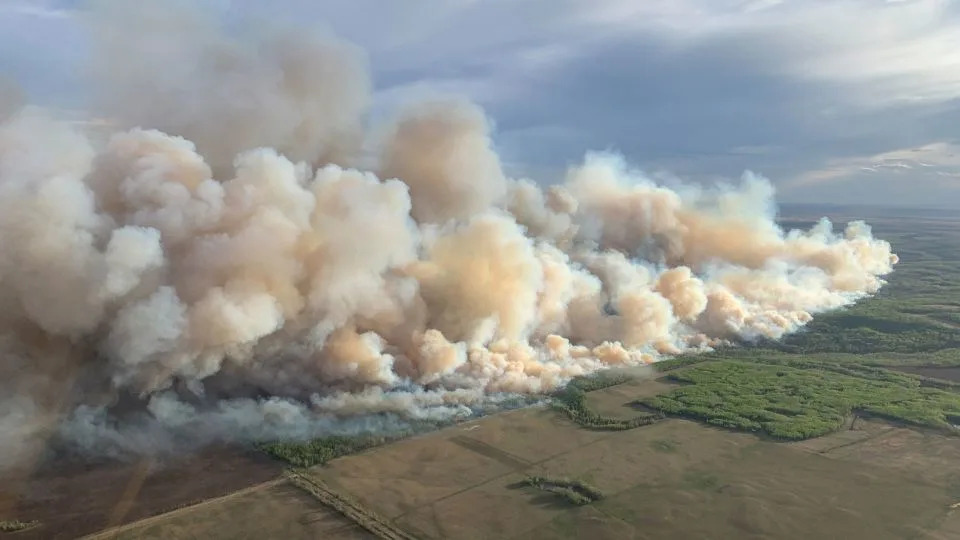
Smoke rises Friday from mutual aid wildfire GCU007 in the Grande Prairie Forest Area near TeePee Creek, Alberta. - Alberta Wildfire/Handout/Reuters
“In the past, the winter conditions are what put out a lot of holdover fires,” Ma said. “In this case, what we’ve seen is that due to higher temperatures and persistent drought through the last year, many of these holdover fires were not put out like they normally are.”
Two “zombie” fires, the Patry Creek Fire and the Nogah Creek wildfire, are growing rapidly to the north and east of Fort Nelson and contributing to the evacuation orders.
Evacuation alerts are also in place for parts of Alberta as the MWF-017 wildfire burns out of control near Fort McMurray in the northeastern area of the province, officials said. The fire had burned about 16,000 acres as of Sunday morning.
Hazardous smoke creeps into the US
Smoke from the infernos has caused Environment Canada to issue a special air quality statement extending from British Columbia to Saskatchewan.
It has also caused smoke to waft down into the northern tier of the US for the first time this year, and for air quality alerts to be issued for Wisconsin, Minnesota and Iowa. Air quality reached “unhealthy” levels in all three states Monday, including Minneapolis-St. Paul, according to AirNow.gov.
On Monday afternoon, the Twin Cities had the eighth-worst air quality of 119 major cities tracked by IQAIR, a company tracking air quality worldwide.
Particulate matter levels this high can cause issues for sensitive groups or anyone spending prolonged time outdoors, according to the Environmental Protection Agency. Wildfire smoke has been linked to increases in certain cancers and heart-related issues, among other ailments.
Just last year, smoke from Canadian wildfires made its way to parts of the United States and caused dangerous air conditions across the country. In 2023, 19 counties in 11 states had days with “very unhealthy” and “hazardous” air quality — given at least a “code purple” alert on the US Environmental Protection Agency’s Air Quality Index.
Poor air quality conditions are expected to linger in the US through Monday, and likely longer in parts of Canada closer to the fires, including Alberta and British Columbia.
Canadian officials warned those at higher risk of experiencing health effects from wildfire smoke include people with lung disease such as asthma, people with heart disease, along with older adults, children, those who are pregnant and people who work outdoors. They also recommended those who spend time outdoors wear a mask to help reduce exposure to fine particles of smoke.

